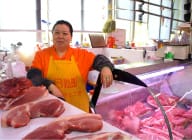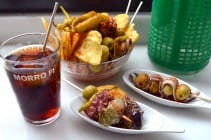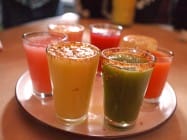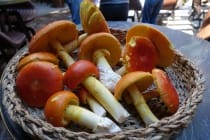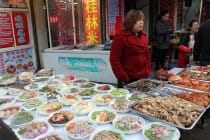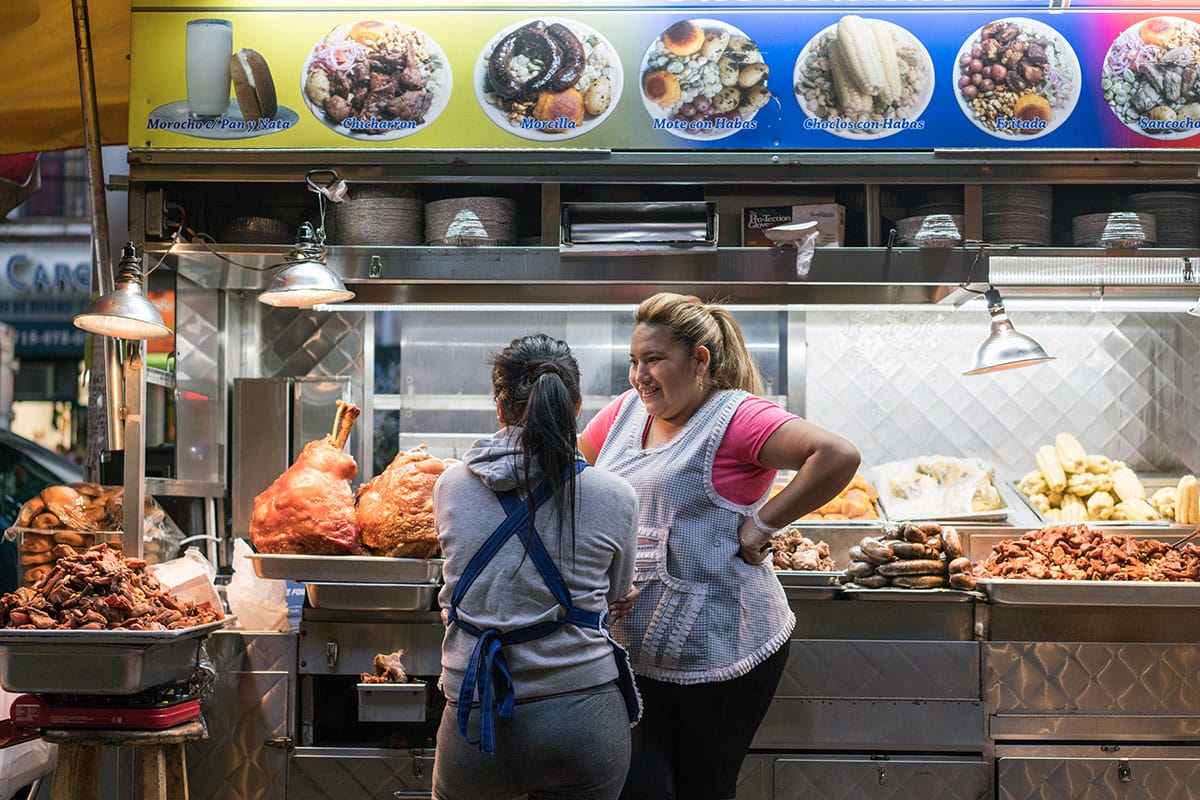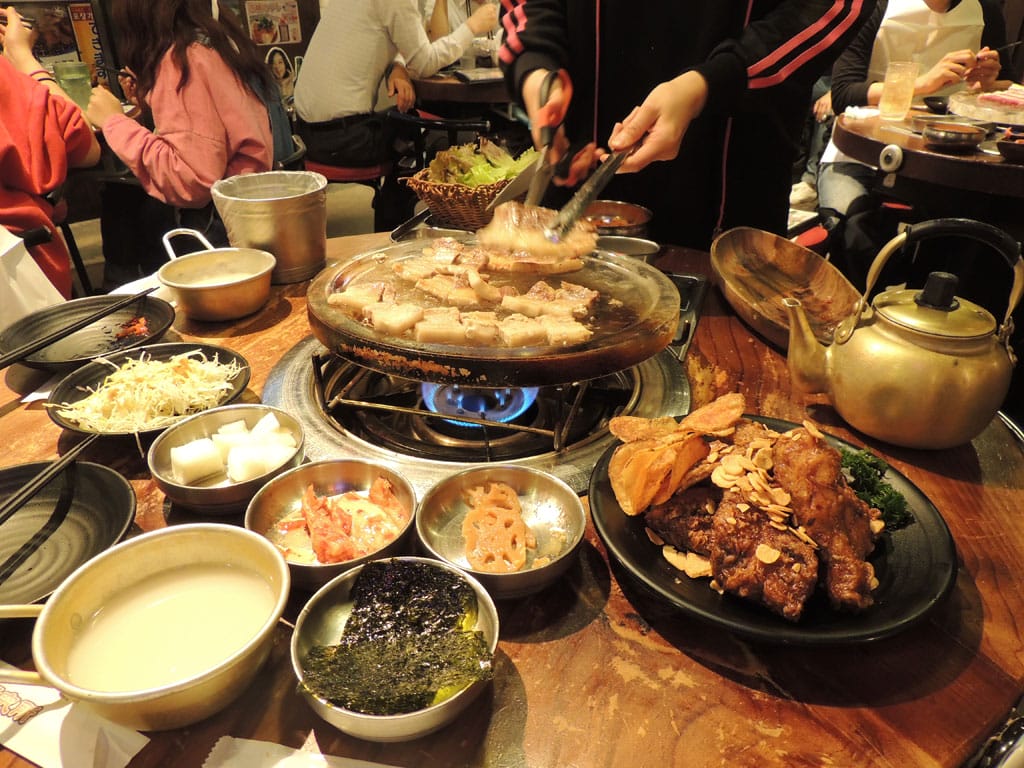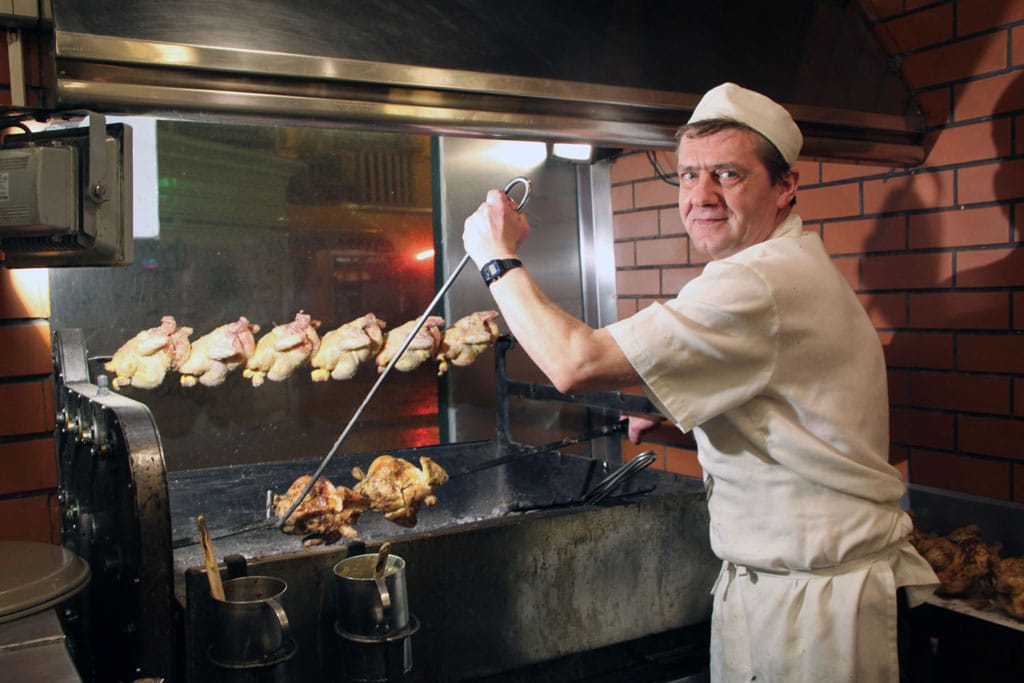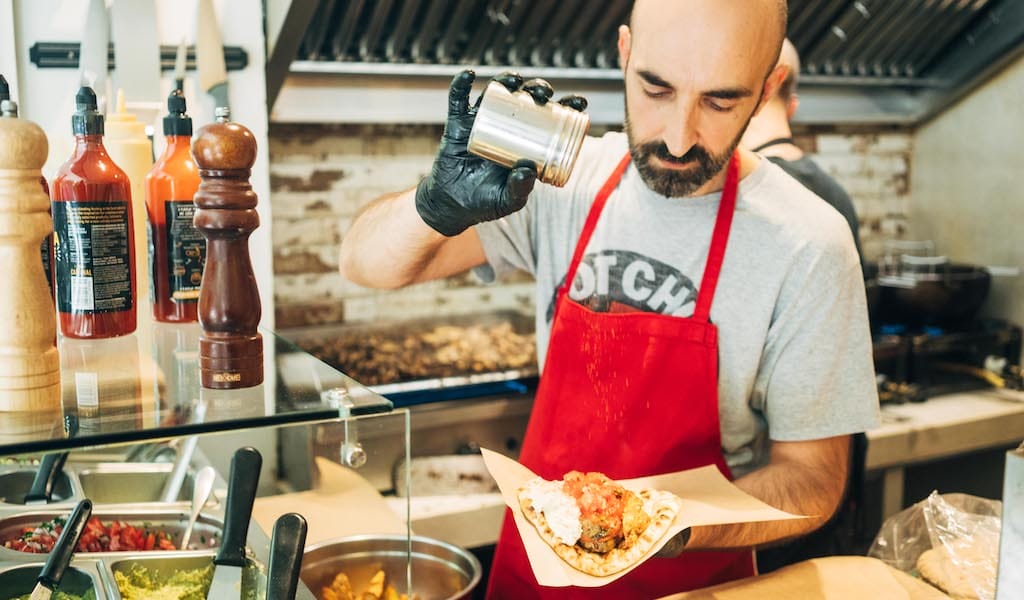Walking through Tokyo’s Shin-Okubo neighborhood – AKA Koreatown – can be sensory overload. It’s Saturday night, and we weave through throngs of people along Okubo Street, passing crowded cafes and Korean cosmetics shops. The soundtrack of Korean pop music drifting from every restaurant and café is punctuated by shouts from inside a Korean grocery or the blare of a pachinko parlor. Every shop is painted in an audacious purple or pink or else a dazzling orange or yellow, competing for attention. Scents of foods spicy and sweet drift from storefronts.
Tokyoites come to Koreatown for two reasons: shopping and food, but we haven’t come to shop. The crowds thin out along Shin-Okubo’s backstreets, though the shops and restaurants are just as packed. The best place to sample the range of Koreatown’s culinary spectrum is Tori-niku Kenkyuujo, “Chicken Laboratory,” which sits on one such narrow lane amid small shops peddling K-pop paraphernalia and the latest fashion from the streets of Seoul. This funky local favorite beckons hungry diners with the caricature of a grinning chicken festooned over the door. The mouthwatering smell of roast garlic and gochujang, fermented red chili paste, wafts out onto the street. The sound of sizzling pork greets us as we enter.
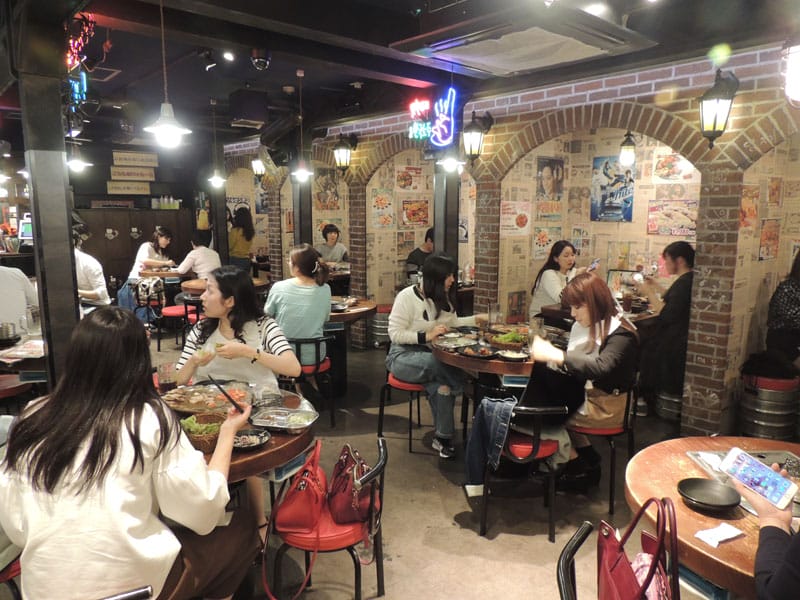
Tori-niku Kenkyuujo is set up to serve Korean barbecue and sells all the standards, from chijimi (the Japanese term for savory Korean pancakes) to samgyetang (ginseng and chicken soup), but most people come to the Chicken Lab for their specialty: Korean fried chicken. We make up our mind before we reach our seats and so promptly order samgyeopsal, thick and fatty slices of pork belly, as well as half a bird fried in soy sauce and garlic, our favorite of the six different styles of fried chicken on offer. Our server fires up the tabletop gas grill and hurries to the kitchen with our order. The restaurant begins to fill up, and diners conversing in Korean and Japanese have to compete with a never-ending stream of K-pop videos playing on the massive flatscreen TV.
A few minutes later, our server returns with dishes of kimchi, lotus root in sesame oil, and sheets of gim, or dried seaweed, to stave off our advancing appetites. To wash these down, we order a pot of fresh makgeolli, a slightly sweet and unfiltered Korean rice wine that teems with potent probiotics. Before we can polish off these healthy tidbits, however, a plate of fried chicken graces the table. The food is flying so fast from the kitchen that we can barely get our paper aprons on before four thick slabs of pork hit the grill and start to sizzle. As the samgyeopsal pops and spits, we tuck into the fried chicken. The meat is succulent and soft, the skin crisp and perfectly flavored.
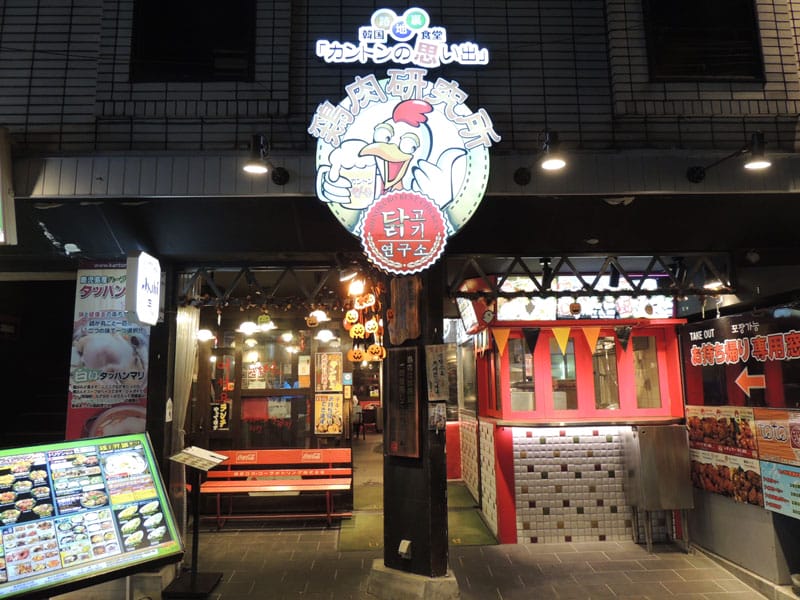
Our server returns periodically to first turn over the strips of pork and then to cut them into bite-size morsels. These we dip in gochujang, garnish with fresh spring onions and wrap in tender lettuce leaves. Part of the joy of Korean barbecue is this construction of every bite, the careful calibration of flavors. As our stomachs fill, our pace slackens but never ceases until every plate is empty. Another pot of makgeolli helps, too.
This article was originally published on October 19, 2016.
 July 22, 2021 O Churrasco
July 22, 2021 O Churrasco
Rua das Portas de Santo Antão is probably the most touristy food street in Lisbon. This […] Posted in Lisbon July 8, 2019 Cookoomela Grill
July 8, 2019 Cookoomela Grill
In the center of Exarchia, a hub of activism often referred to as the “anarchist” […] Posted in Athens March 8, 2019 Spring (Onions) Are in the Air
March 8, 2019 Spring (Onions) Are in the Air
The trick to cooking calçots, a special Catalan spring onion, is simple: a good charcoal […] Posted in Barcelona
Published on May 21, 2018
Related stories
July 22, 2021
LisbonRua das Portas de Santo Antão is probably the most touristy food street in Lisbon. This pedestrian road is full of restaurants with guys outside hawking their specials and menus offering out-of-season sardines and frozen pizzas. But there’s more to this downtown thoroughfare than just luring American vacationers to overpriced mediocrity. Located on this road,…
July 8, 2019
AthensIn the center of Exarchia, a hub of activism often referred to as the “anarchist” neighborhood of Athens, a small minimalist eatery with just a few tables outside opened last April and was an instant success by breaking all the rules. At first glance it looks like a regular souvlaki shop, with sauces and condiments…
Spend a day with us in Sants, feasting off the grid!
March 8, 2019
BarcelonaThe trick to cooking calçots, a special Catalan spring onion, is simple: a good charcoal grill. The heat from the glowing embers is crucial to creating the perfectly scorched exterior (the black outer skin is then peeled away, leaving the tender and juicy inner bulb). Fire and smoke – along with exceptionally fresh green onions…
















